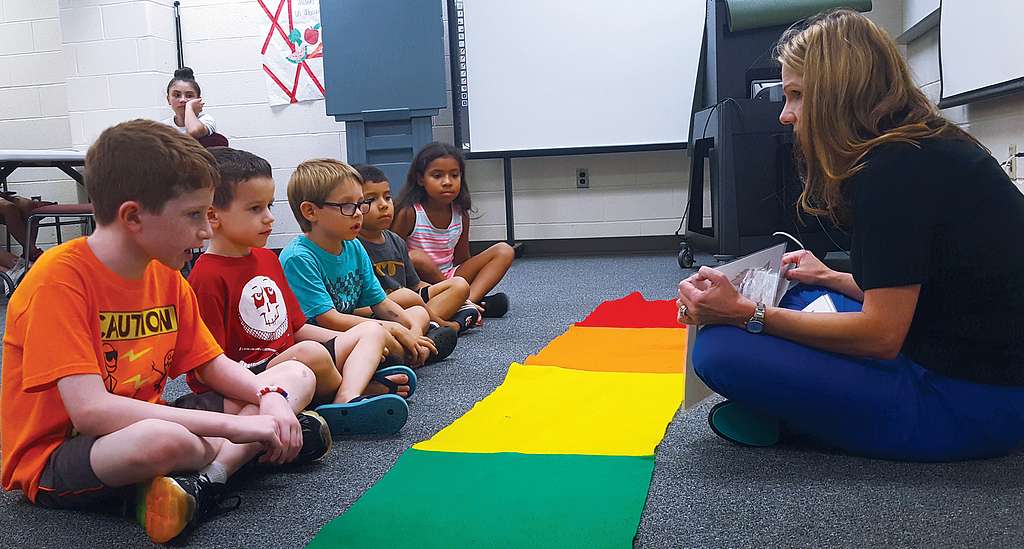Stand up against bullying behaviour by taking responsibility for creating a safe and supportive school environment, where everyone feels valued and respected, and has the opportunity to thrive.
As parents, one of the toughest challenges we face is ensuring our children feel safe and valued in their school environment. I know from experience, that bullying can shatter a child's confidence and sense of security. Childhood is not a great place when you are getting picked on... childhood is meant to be fun and exciting. I’ve been on both ends of this, where I experienced bullying at my first school and feeling a lack of confidence, to moving into a new school where kindness was in abundance. At this school I watched, firsthand, my confidence skyrocket.
Bullying can make a child’s day very long and miserable and is an issue that many children encounter at some point in their lives. It can take various forms, from physical intimidation and exclusion, to verbal harassment and online abuse. Regardless of the type, the effects of bullying can be deeply damaging, leading to feelings of fear, anxiety, and helplessness. As parents, we naturally want to protect our children from harm, but it's equally important to equip them with the tools and strategies they need to deal with bullying effectively. Empowering our children with the right mindset and skills not only helps them handle immediate challenges but also builds their resilience for future obstacles.
Let’s go through some ways we can empower our kiddos to navigate these tough situations with resilience and strength.
Empower Your Kids to Stand Up Against Bullying
Teaching our children to take responsibility for standing up against bullying behaviour is crucial. We must instil in them the confidence to speak out when they witness or experience bullying. Encourage your child to assertively but calmly tell the bully to stop. Phrases like, “That’s not okay” or “Leave me alone” can be powerful. It’s also essential for them to know when to seek help from an adult. Reinforce that asking for help is not a sign of weakness but a courageous step towards resolving the situation. Role-playing different scenarios at home can give them the practice they need to respond confidently in real-life situations. Now this doesn’t mean you have to get dressed up and put on voices, simply questions like "What would you do if you saw someone being bullied at school?", or "How would you feel if you were being bullied? What would you want others to do?" can get them to start thinking about different situations they could face (or may be facing). Equip them with the understanding that they have the power to make a difference, not just for themselves, but for others as well.
Incorporate Choices: Help your child understand that they have choices in how they respond to bullying. They can choose to speak up, walk away, or seek support. Emphasise that these choices can empower them to take control of the situation and protect their wellbeing. By recognising their options, children can feel less helpless and more capable of handling difficult situations.
Promote a Growth Mindset
As we know, bullying can severely impact a child’s self-esteem, but promoting a growth mindset can help mitigate this damage. We need to teach our children that bullying does not define their worth. Emphasise that everyone has the potential to grow and improve, and that the hurtful words or actions of others are a reflection of those individuals, not of them. Usually, the source of bullying comes from a place of deficit and the bully may be trying to fill a gap in their life. They, themselves, may be lacking in confidence, and to fill that gap they put others down. Encourage your child to focus on their strengths and to view challenges, including bullying, as opportunities to develop resilience and self-belief. Praise their efforts and persistence in dealing with difficult situations, rather than just the outcomes. This helps them build a solid foundation of self-worth that isn’t easily shaken by others’ negative behaviours.
Incorporate Mindset: Use Carol Dweck's concept of a growth mindset to help your child understand that their abilities and worth are not fixed. Explain that facing bullying is a chance to develop resilience and inner strength. Remind them that their value comes from their efforts, perseverance, and the person they choose to become, not from the negative opinions of others. Encourage them to see every challenge as an opportunity for growth.
Encourage Setting Goals for a Supportive School Environment
Creating a supportive and inclusive school environment is a community effort, and our children can play a significant role. Encourage your child to set goals for how they can contribute to a positive school culture. This might include befriending new or isolated classmates, standing up against bullying, or participating in school initiatives aimed at promoting kindness and respect. Discuss with them the importance of empathy and understanding, and how these qualities can help build a more inclusive community. Help them come up with concrete actions they can take to make their school a safer and more welcoming place for everyone. Celebrate their efforts to make a difference, no matter how small, reinforcing that every positive action contributes to a larger change. This is all about teaching your children to be good people.
Incorporate Goals and Perseverance: Help your child set goals related to promoting a positive school environment. This could be something like "I will invite a new classmate to hang out with us at lunch" or "I will speak up if I see someone being bullied." Encourage them to stick to these goals, even when it's challenging. Teach them that perseverance is key to making a lasting impact. Celebrate their progress and remind them that their efforts, no matter how small, contribute to creating a kinder and more inclusive school.
Change Environment
If your child is on the receiving end of nasty behaviour, and there’s not much the school can do about it (or want to do about it), sometimes the best option is to jump ship. This was definitely the case when I left my first school. Sometimes, despite our best efforts, the bullying situation may not improve, making a change in environment necessary for your child's wellbeing. Help your child understand that choosing to change schools is a valid option if their current one remains unpleasant. Reassure them that seeking a new environment is not a sign of failure but a proactive step toward their mental and emotional health. Emphasise the importance of prioritising their wellbeing and happiness. Set clear goals for what you hope to achieve with this change, such as finding a more supportive peer group or a school with a strong anti-bullying policy. Remind your child that adapting to a new environment takes time and effort, and encourage them to be patient with themselves as they adjust and find their place in the new setting.
Helping our children deal with bullying involves more than just addressing the immediate incidents. It's about empowering them to stand up for themselves and others, promoting a mindset that values growth and resilience, and encouraging them to be proactive in creating a positive school environment. By taking these steps and incorporating the CRASHING INTO POTENTIAL Resilience Framework of Choices, Mindset, Goals, and Perseverance, we can help our children develop the skills and confidence they need to overcome challenges and build a brighter, more inclusive future. Together, let's empower our kids to face bullying head-on, with courage, strength, and compassion.





